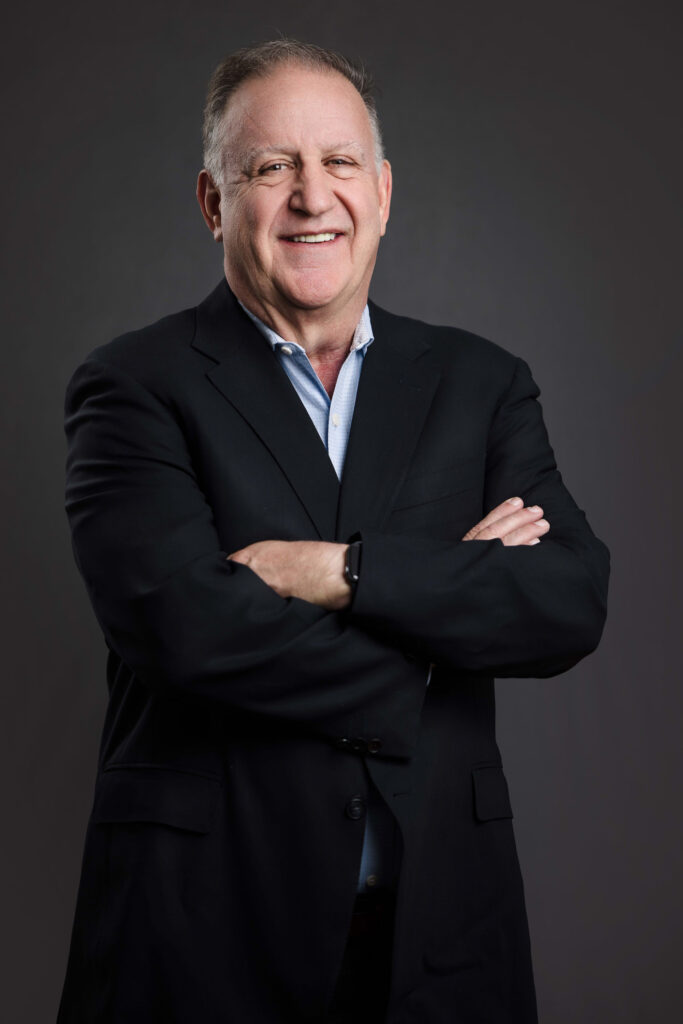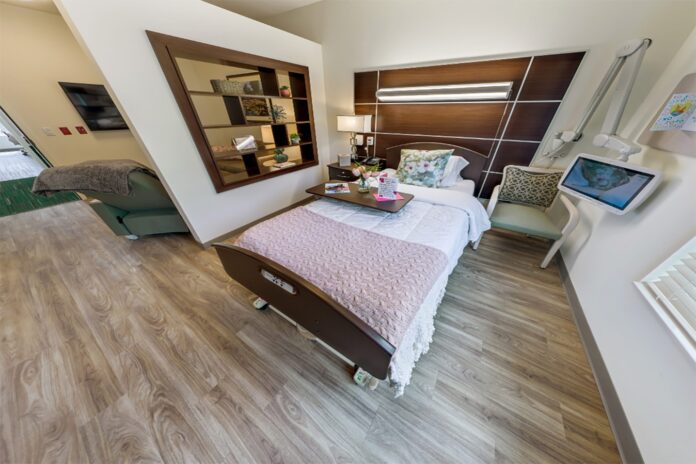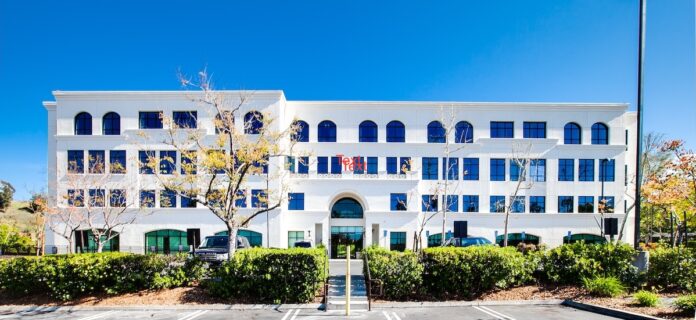“Well, ladies and gentlemen, are you ready to see NASA’s newest X plane?” Pam Melroy, NASA deputy administrator, asked the 150 people gathered at the Skunk Works facility in Palmdale earlier this month. “Great. Me too. Well then, let’s see it.”
And with that, the curtain was dropped on the X-59, an experimental aircraft built by Lockheed Martin Corp. for NASA’s Quiet SuperSonic Technology mission, which is designed to reduce sonic booms to the sound of a mere thump.
The Skunk Works, known officially as Advanced Development Programs, is where the Bethesda, Maryland-based aerospace and defense contractor does its top-secret work. So, the invitation to attend a public unveiling of the X-59 there was a rare opportunity to see inside the facility.
The Skunk Works’ legacy includes some of the most advanced aircraft ever built: the XP-80, a prototype jet fighter developed during World War II; the U2 high-altitude spy plane; the SR-71 Blackbird, one of the fastest planes to have ever flown; and the F-117 Nighthawk, the first stealth bomber.
The X-59 continues that legacy.
“Today marks a historic milestone for us as we unveil the X-59. This is really another jewel in the crown, not just for Aerospace Valley, but also a very rich history of NASA aeronautics,” Melroy said.
The first A in NASA stands for aeronautics and the agency is all about groundbreaking aerospace innovation, she said.
“The X-59 proudly continues this legacy, representing the forefront of technology driving aviation forward,” she added.
The plane’s specs
The company received a nearly $248 million contract six years ago from NASA to develop, build and test the X-59.
With the plane finally built – there were delays in its construction – it will begin flying this summer, said David Richardson, head of the X-59 project at the Skunk Works.
The plane will fly about 15 times before it goes supersonic and proves that it can be quieter than the typical plane flying faster than the speed of sound, he said.
“That is really what we are shooting for,” Richardson said. “For me at least, when we don’t hear that boom that will be the big, monumental achievement, not first flight.”
The X-59 is a one-of-a-kind aircraft that Lockheed won’t build again.
“Everything we do is the first time anybody has ever done this,” Richardson said. “It’s made up of parts from other aircraft, but it has never been combined in this way before.”
The tail-mounted engine, for instance, was taken from an F-18.
“That is the only engine we could get to meet the requirements of the low boom that sort of fit the mission,” Richardson said.
The engine, however, has a limited life of about 1,000 hours, so the plane will only be able to fly for a couple of years, he continued, adding, “Fighters are usually in afterburner for maybe seconds. We stay there for minutes. We’re actually burning the life out of this engine.”
Michael Buonanno, chief engineer for the aircraft, said the entire airplane has been shaped for a sonic boom.
“One of the things that is challenging about designing a low sonic boom airplane is that you have to align the center of gravity of the airplane with the features that are otherwise challenging in terms of balancing the airplane,” he said.
One of the ways the Skunk Works team made those two conflicting things work together is by locating the wing where it is, shaping the distribution of the lift on the wing so that the shock waves that come from it do not coalesce, and adding the canards – small wings – in front of the wing and the horizontal tail in behind the wing, he added. The wings are located more than halfway back on the fuselage of the aircraft.
“We have them all share the load together, so they are all lifting when the airplane is cruising and that lets us meet our sonic boom goals,” Buonanno said.
Suppliers to the program are spread across the country and in the United Kingdom and Canada. Most, however, are in Southern California, with eight of the companies located in the San Fernando or Santa Clarita valleys.
Among them are EON Instrumentation Inc. in Van Nuys; Forrest Machining Inc. in Valencia; Embe Industries Inc. in Glendale; and Senior Aerospace SSP in Burbank.
Overcoming difficulties
The program wasn’t without its challenges.
For one, the pandemic put it behind by about two months.
And then there were other problems, such as the microscopic solder short-circuits in one of the onboard flight computers, Richardson said.
“That’s one of the reasons why we had a standdown for about three months to try to solve that,” he added. “But we’re back in the saddle again and going forward.”
Part of the secret of quieting the sonic booms to the equivalent of a car door slamming shut is pushing everything as far aft – or to the rear – as far as one possibly can, Richardson continued.
“It is not that this airplane has a really long nose; what it is, is the wing and everything is pushed to the back,” Richardson said.
But the shock waves would coalesce not just at the front of the plane, but at the back of it as well.
“We have one at the front and then all the air closes together at the back, so you hear boom, boom,” he said.
The “T” on the back of the tail actually creates another shock that interferes with the louder shock wave, he added.
“So the energy is still there, but it’s sort of like noise cancellation, if you will, to help interfere with that so that people don’t perceive it as much,” Richardson continued.
Understanding noise levels
Peter Coen, who is in charge of the NASA Quiet SuperSonic Technologies mission integration, related the background on the regulations that the Federal Aviation Administration enforces and how the International Civil Aviation Organization’s Committee on Aviation Environmental Protection has no standard on supersonic flight but did pass a resolution that nobody should be intentionally exposed to sonic booms.
“The resolution also says that (the committee) welcomes information that can update them on the noise from supersonic flights,” Coen said. “Every time, what we have been doing is bringing information to them about our research.”
In 2016, the committee said it felt it was at the point that if NASA were to bring it the right data it would certify a supersonic aircraft to fly over land, provided it was flying below a certain noise level, Coen said.
“The idea of the X-59 is to help them find out what level is quiet enough,” he added.
Lab studies conducted by the space agency have put that figure at around 75 perceived level of decibels, Coen continued.
By comparison, the Concorde, the most recent commercial supersonic jet, generated 105 perceived level of decibels, according to NASA. Distant thunder is about 73, a basketball bouncing is about 90, and the average hand clap comes in at around 95.
When the X-59 conducts flights over six communities in the United States – both urban and rural – NASA will collect data from the residents living there as to whether they were bothered by the sonic thump or not. The flights have not yet been scheduled.
“That is the data we create and bring it to the committee. That is where NASA’s role ends,” Coen said. “We create scientific information in an unbiased manner and then the FAA and the (committee) can create policy and regulations which will allow for manufacturers to make decisions about whether they can build products that meet those regulations.”
Lockheed is not in the commercial aircraft business, so it would not be building any airplanes that could carry passengers at supersonic speed, Richardson said.
The company would more likely partner with a commercial jet manufacturer, he said.
“If there is a company out there that wants to build a low-boom supersonic commercial airliner or business jet, we have the know-how and the experience to help them achieve that,” Richardson said.
Both Buonanno and Richardson said that operational supersonic commercial jets would likely not become available until about 2035.




